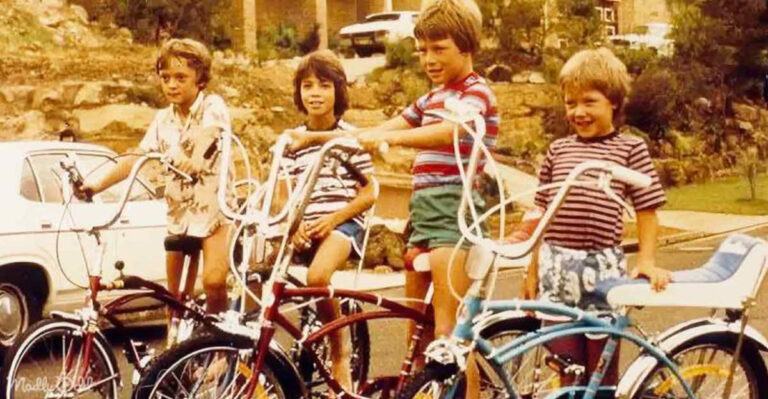20 Gen Z Habits Boomers Are Honestly Tired Of Hearing About
In a world where cultural shifts are as frequent as meme updates, Gen Z has mastered the art of turning heads with their distinctive habits.
This blog post dives into 20 habits that have Boomers scratching their heads, wondering if the world has changed too much or if they’re just out of the loop.
From fashion faux pas that have become the norm to a linguistic overhaul, the generational gap has never been more entertaining.
1. Romanticizing Burnout, Then Talking About “Soft Quitting”
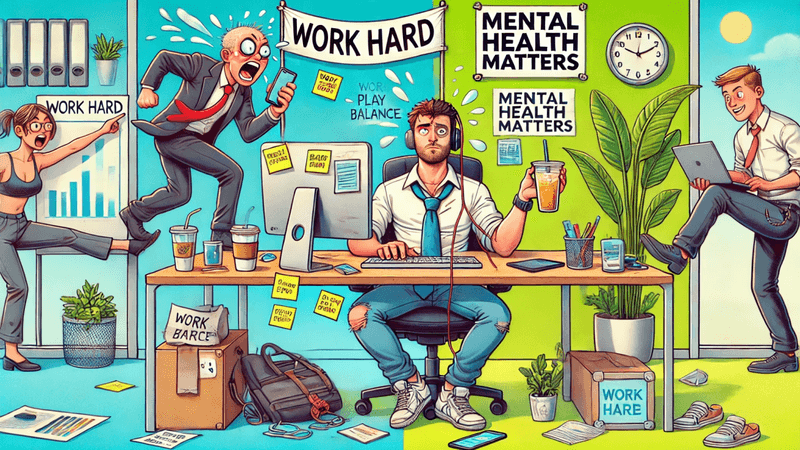
Picture this: a Gen Z’er sipping a cold brew, lamenting about the hustle culture they once idolized. They talk about burnout as if it were a badge of honor, only to pivot and champion ‘soft quitting’ as the new self-care. The irony here? It’s all about balance, apparently. While Boomers were busy climbing corporate ladders, Gen Z is redefining success on their own terms.
But what does ‘soft quitting’ even mean? Essentially, it’s about setting boundaries and valuing mental health over endless work hours. It’s a trend that Boomers find conflicting, as they were raised in a world where hard work was synonymous with grit and character.
For Gen Z, the mantra is simple: work to live, don’t live to work. It’s a cultural shift that’s causing quite the generational stir, making Boomers wonder if they missed the memo on this new-age wisdom.
2. Wearing Socks with Sandals and Calling It Fashion

Once upon a time, wearing socks with sandals was the ultimate fashion faux pas. Enter Gen Z, who’ve turned this into a fashion statement. Strutting down the street, they wear this combo with such confidence, it’s almost convincing. Boomers, however, are left scratching their heads, wondering how this once-derided style became the height of fashion.
There’s a method to their madness, apparently. It’s all about comfort meeting style, a rebellion against conventional fashion norms. Gen Z is not just adopting this look—they’re owning it.
With social media platforms like TikTok and Instagram amplifying these trends, the line between irony and sincerity blurs. For Boomers, it’s a reminder that fashion rules are meant to be broken, even if it means revisiting styles they hoped were buried in the past.
3. Starting Every Sentence with “Not Gonna Lie…”

“Not gonna lie,” is a phrase that has taken over Gen Z’s conversational landscape. It’s the precursor to almost any statement, whether profound or mundane. For Boomers, it can feel like nails on a chalkboard, especially when used excessively. The intention? Supposedly, it lends a sense of sincerity to whatever follows.
This linguistic quirk reflects Gen Z’s desire for authenticity. In a world dominated by filters and curated online personas, signaling honesty becomes a valuable commodity.
Yet, for Boomers, who grew up in a time where words were chosen carefully and with intent, this casual preamble can seem redundant. “Just say what you mean,” they might argue. But for Gen Z, it’s a nuanced way to navigate the complexities of modern communication.
4. Turning Therapy Language Into TikTok Trends
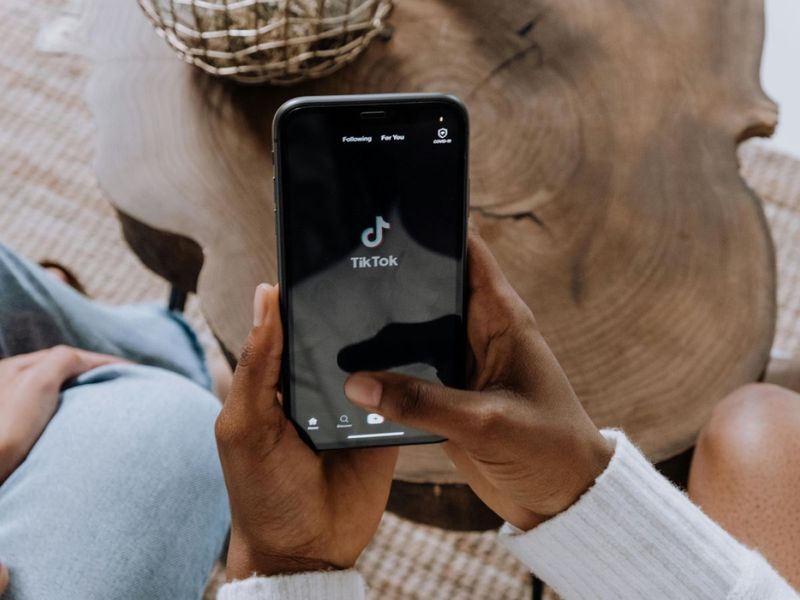
In the realm of TikTok, therapy-speak is thriving. Gen Z has managed to transform therapeutic language into viral trends, often using terms like ‘gaslighting’ and ‘boundaries’ in contexts that might puzzle Boomers. It’s a mix of awareness and oversimplification, making mental health a trending topic.
The appeal? It makes complex emotional concepts accessible. For Boomers, who might have been more private about such matters, the public airing of mental health feels both refreshing and bewildering.
However, there’s a fine line between raising awareness and trivializing serious issues. As Gen Z continues to navigate this balance, Boomers are left to watch, bemused by how therapy-speak has become a part of everyday banter.
5. Texting “LOL” While Clearly Not Laughing
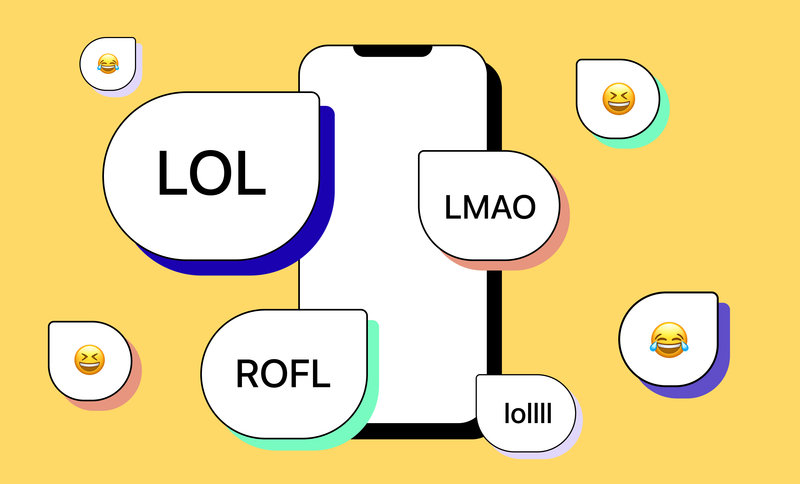
The acronym ‘LOL’ has become a staple in digital communication, yet its meaning has evolved. For Gen Z, ‘LOL’ doesn’t always signify laughter—it’s often a filler in conversations, much to the confusion of Boomers who take things more literally.
It’s the equivalent of a verbal nod, acknowledging a statement without the commitment of genuine amusement. In the age of emojis and GIFs, words like ‘LOL’ are part of a broader, more nuanced digital language.
For Boomers, who might reminisce about face-to-face interactions where laughter was audible and sincere, this shift can feel disingenuous. Yet, for Gen Z, it’s merely an adaptation to the fluidity of online communication. It’s less about the laugh and more about keeping the conversation going.
6. Bringing Back Mullets (Unironically)

The mullet, once a relic of the 80s, has made an unexpected comeback, thanks to Gen Z. What was once considered a hairstyle mistake is now a bold statement, embraced with a sense of irony and nostalgia that Boomers find perplexing.
To Gen Z, the mullet represents a blend of past and present, defying conventional beauty norms. It’s a haircut that screams individuality, perfectly suited for an era where personal expression is key.
Boomers, who may have sported the style in its original heyday, watch in amusement as this “business in the front, party in the back” look resurfaces. It’s a hairstyle renaissance that highlights the cyclical nature of fashion, where what’s old is suddenly new again.
7. Using “✨Aesthetic✨” to Describe Literally Everything
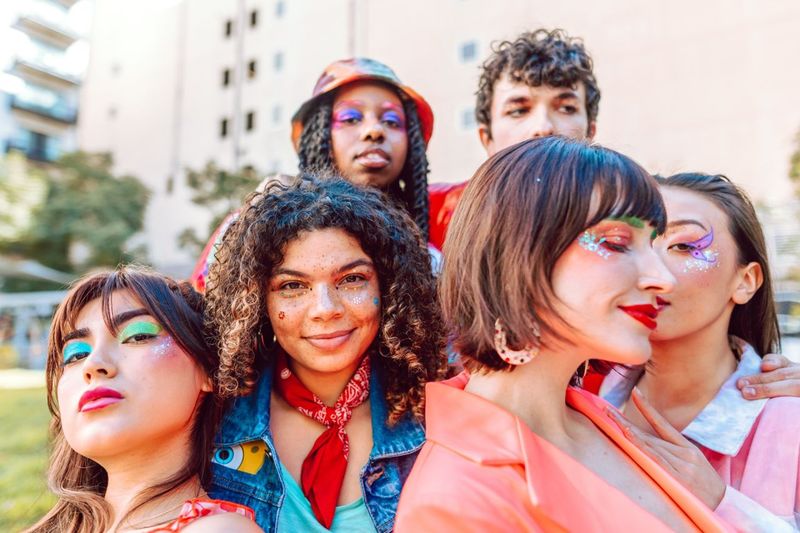
Everything is ‘✨aesthetic✨’ in Gen Z’s world. From coffee cups to color palettes, this generation has turned the word into a descriptor for anything that pleases the eye. Boomers might find this overuse bewildering, as it elevates the mundane to an art form of sorts.
It’s not just about beauty—it’s about the vibe, the mood, the overall feel. Gen Z’s obsession with aesthetics is a testament to their appreciation for the visual world, where Instagram feeds are curated and Pinterest boards are meticulously organized.
For Boomers, who may prioritize function over form, this focus on aesthetics seems whimsical, if not excessive. Yet, for Gen Z, it’s a way to find joy in everyday life, turning the ordinary into something worth noticing.
8. Replacing Entire Conversations with Reaction GIFs

Gone are the days of lengthy text exchanges. For Gen Z, a well-placed reaction GIF can convey more emotion than words ever could. This visual shorthand is both efficient and expressive, but Boomers might view it as another step away from meaningful communication.
GIFs pack emotion into bite-sized clips, sparking joy, laughter, or empathy without the need for verbal explanation. In a digital age where time is of the essence, they provide instant connection.
Yet, for Boomers, who value the art of conversation, the reliance on GIFs might seem lazy or superficial. It’s a generational gap where visual literacy meets traditional dialogue, highlighting how communication continues to evolve.
9. Saying “Main Character Energy” Out Loud

Gen Z has adopted the phrase “main character energy” as a way to describe moments where they feel like the protagonist of their own story. This self-aggrandizing mindset is playful yet powerful, encouraging individuals to embrace their unique narratives.
For Boomers, this might sound egotistical, as the notion of everyone being the ‘main character’ is quite foreign. It’s a mindset shift from humility to self-assurance, marking a generational difference in self-perception.
But for Gen Z, it’s about empowerment and self-expression, where everyone’s journey is worth celebrating. The phrase has become a cultural touchstone, reflecting a generation that values living authentically and unapologetically.
10. Talking About Trauma Like It’s a Brand

In the digital sphere, Gen Z is known for their candidness about personal struggles, often discussing trauma as if it were part of their personal brand. This transparency is both empowering and perplexing to Boomers, who might prefer to keep such matters private.
By sharing their stories, Gen Z fosters a sense of community and understanding, breaking down stigmas associated with mental health. However, the casual use of the term ‘trauma’ can sometimes dilute its seriousness, turning it into a buzzword rather than a genuine issue.
Boomers may find this trend unsettling, as it challenges traditional boundaries of what’s considered appropriate to share. Nonetheless, it’s a testament to Gen Z’s commitment to authenticity and openness in an interconnected world.
11. Oversharing, Then Calling It “Real Talk”

Gen Z has redefined the boundaries of oversharing, often labeling their candidness as ‘Real Talk.’ This trend of divulging personal details online can be eye-opening yet awkward for Boomers, who may prefer discretion.
The allure of ‘Real Talk’ lies in its authenticity. For Gen Z, it’s about being genuine and transparent, fostering connections built on shared experiences. It’s a rejection of the curated, polished personas often found on social media.
However, the tendency to share so freely can sometimes cross into TMI territory, leaving Boomers to wonder if some things are better left unsaid. Yet, for Gen Z, this openness is a form of empowerment, breaking down barriers one post at a time.
12. Making Every Decision a Poll on Instagram
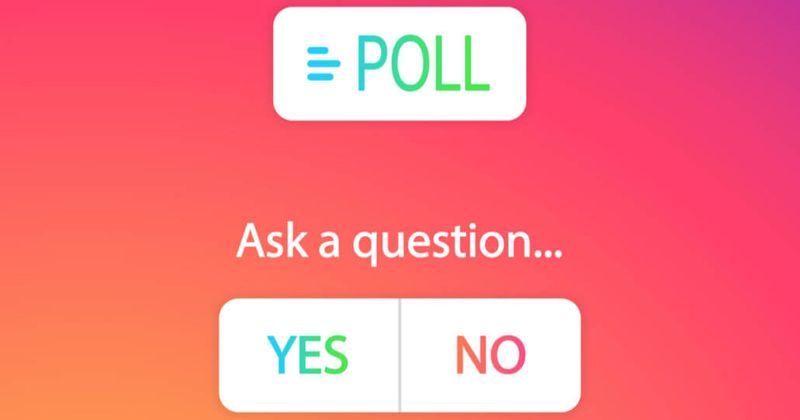
For Gen Z, decision-making has become a community affair, thanks to Instagram polls. From choosing outfits to deciding what to eat, everything is up for a vote. Boomers might find this dependence on social validation puzzling, longing for the days of personal decision-making.
This trend speaks to Gen Z’s desire for interaction and engagement. It’s about feeling connected, even when making mundane choices. The influence of social media has turned personal decisions into community-driven events.
For Boomers, who may value independence and self-reliance, this trend can seem trivial. Yet, for Gen Z, it’s a way to connect and feel seen in a digital world where everyone’s opinion matters. It’s communal living, one poll at a time.
13. Acting Allergic to Phone Calls

Gen Z’s aversion to phone calls is almost legendary. For them, texting or voice notes are the preferred modes of communication, leaving Boomers—who grew up using rotary phones—mystified by this trend.
The reluctance towards phone calls stems from a desire for efficiency and control. Texts allow for thoughtful responses and multitasking, whereas calls demand immediate attention.
Boomers might miss the charm of hearing a voice and the nuances it brings. But for Gen Z, avoiding calls is about convenience and reducing social anxiety. It’s a shift that highlights the evolution of communication preferences across generations.
14. Wearing Sunglasses the Size of Dinner Plates

Oversized sunglasses have become a staple for Gen Z, reminiscent of fashion statements from decades past. These large frames offer both style and sun protection, but Boomers might wonder if they’re more about fashion than function.
The appeal of such eyewear lies in its dramatic flair. Gen Z embraces bold choices, using accessories like oversized sunglasses to express individuality and confidence.
For Boomers, who might recall similar trends from their youth, this fashion revival prompts nostalgia. Yet, it also raises questions about the balance between practicality and style, as new meets old in the ever-revolving door of fashion.
15. Rebranding Laziness as “Protecting Your Peace”

For Gen Z, self-care has taken on a new meaning, sometimes rebranding what was once seen as laziness into ‘protecting your peace.’ This shift in perspective is refreshing to some but perplexing to Boomers, who equate inactivity with idleness.
‘Protecting your peace’ is about prioritizing mental health and seeking balance. For Gen Z, it’s a mantra that encourages rest and rejuvenation, challenging the hustle mentality of previous generations.
Boomers might view this as an excuse to shirk responsibilities, but for Gen Z, it’s an essential part of maintaining well-being. It’s a cultural evolution that highlights changing attitudes towards work, rest, and self-worth.
16. Declaring Everything “Cringe” Except Themselves

‘Cringe’ is a term Gen Z wields with impressive frequency, labeling anything they find awkward or embarrassing. Interestingly, their self-awareness keeps them from applying this label to themselves. Boomers, however, might find this fixation on ‘cringe’ curious, if not overly judgmental.
For Gen Z, calling out ‘cringe’ is a way to navigate social norms and maintain a sense of cool detachment. It’s both a critique and a defense mechanism, keeping them aligned with current trends while avoiding pitfalls.
Boomers might see this as overly critical, but for Gen Z, it’s a humorous way to engage with the world around them. It’s about finding balance in a rapidly changing cultural landscape.
17. Refusing to Use Punctuation—It’s a Vibe, Apparently

For Gen Z, punctuation is optional, transforming sentences into streams of thought. This casual approach can baffle Boomers, who value grammar and clarity.
Leaving out punctuation creates a vibe—an informal tone that reflects Gen Z’s laid-back attitude towards communication. It’s a language evolution that prioritizes ease and speed over precision.
Boomers, who grew up with strict grammar rules, might find this lack of structure unsettling. However, for Gen Z, it’s about creating a conversational flow that mirrors their fast-paced, interconnected lives.
18. Ending Every Deep Statement with “But Idk”

“But idk,” has become a signature sign-off for Gen Z, adding a layer of irony to serious statements. This phrase can perplex Boomers, who might see it as undermining the importance of the message.
For Gen Z, it’s a way to express thoughts without committing to absolute certainty. It reflects a culture that values open-endedness and flexibility, acknowledging that perspectives are always evolving.
Boomers may find this hesitancy confusing, preferring definitive statements. However, for Gen Z, it’s about maintaining humility and openness in a world full of complexities. It’s a verbal shrug that encapsulates the uncertainty of modern life.
19. Turning Basic Life Skills into “Life Hacks”

In Gen Z’s world, even basic life skills are rebranded as ‘life hacks.’ This trend of framing everyday tasks as innovative solutions can amuse Boomers, who see it as reinventing the wheel.
Gen Z’s love for ‘life hacks’ highlights their desire for efficiency and creativity. It’s about finding new ways to approach the mundane, turning routine into something exciting.
Boomers might chuckle at the notion of calling simple tasks ‘hacks,’ but for Gen Z, it’s a playful approach to problem-solving. It reflects a generational shift in how we perceive and value everyday skills.
20. Pretending They Invented Thrift Shopping
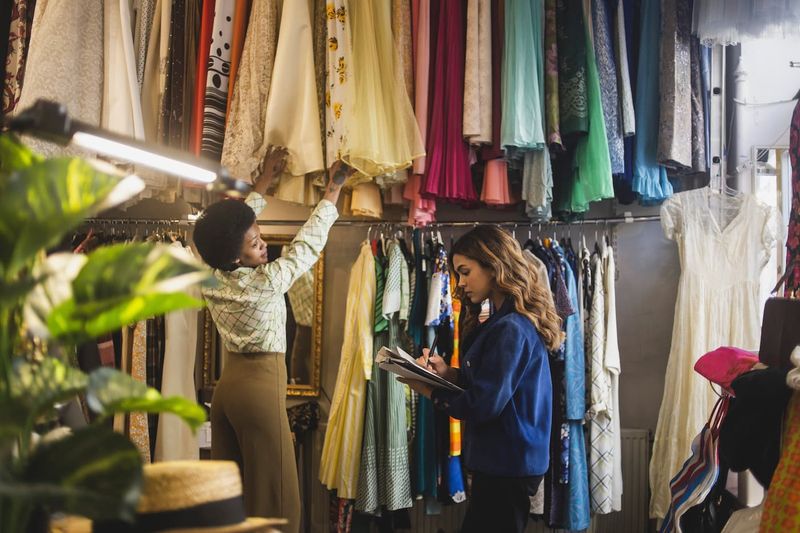
Thrift shopping has become a hallmark of Gen Z’s sustainable lifestyle, but Boomers might chuckle at the notion that this generation thinks they discovered it. For Boomers, thrifting was a way of life long before it was cool.
Gen Z embraces thrift shopping for its eco-friendly impact and unique fashion finds. It’s a statement against fast fashion, aligning with their values of sustainability and individuality.
Boomers may find this enthusiasm amusing, yet admire the environmental consciousness behind it. It’s a reminder that trends are cyclical, and what’s old often becomes new again, much to the delight of the thrifty shopper in all of us.





